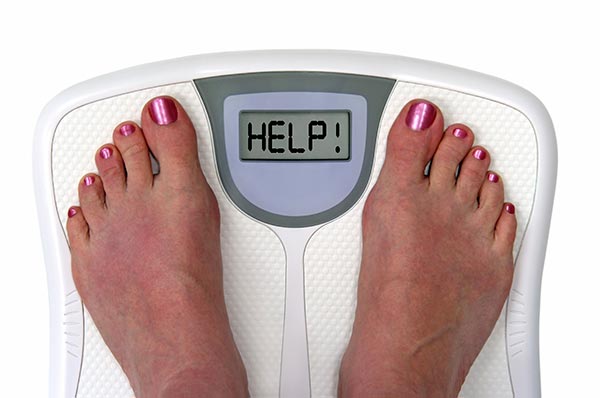By Judith Matz, MSW, LCSW
You have been a social worker and psychotherapist specializing in body image for many years. Does the public reaction to the incident involving news anchorwoman Jennifer Livingston who received a negative e-mail from a viewer surprise you? Is there more acceptance of a variety of body types than there was 20 years ago, for example?
What’s surprising is to see someone speak out so publicly about weight bullying. Given our culture, people who are “overweight” and “obese” feel so much shame, and Jennifer Livingston was very courageous to tell viewers about her experience. I’m pleased to see so much attention being brought to this issue; the message is now out there that criticizing and shaming people about their body size is unacceptable. Clearly she struck a chord given the national focus on her video as she spoke to how her personal experience is part of a greater societal problem. I hope that attention to this issue will continue.
What has brought about this change in public opinion of overweight people? Is it a reaction against extreme skinniness and awareness of eating disorders? A greater public awareness of the effects of bullying?
I agree that there are several factors that contributed to the strong reaction we’re seeing. On the one hand there is greater awareness that the constant focus on thinness in our culture creates body image problems, disordered eating patterns, and eating disorders. These messages affect not only adults, but our nation’s children and teens as well. At the same time, “anti-obesity” messages have never been stronger, and the discrimination and shame that results also have a negative impact on physical and emotional health. While there is much attention paid to bullying in the media, campaigns have not gone far enough to include the issue of weight as a significant source of bullying for kids and adults.
Fortunately, an increasing number of professionals and lay people are identifying weight bullying and discrimination as problems that need to be addressed. Understanding that people naturally come in all shapes and sizes, that weight is not as malleable as we like to think, that diets are ineffective for the great majority of people, that weight does not equal health, and that healthful behaviors can be practiced at any size is part of a new paradigm, known as Health At Every Size, that is gaining national recognition.
Given that there is an obesity epidemic in this country, what would you say to someone who chided an overweight person regarding their weight?
Judging a person based on their body size is nothing short of stereotyping. You cannot tell anything about the health status of a person simply by looking at them. There are people who are fat and healthy just as there are people who are fat and unhealthy. Likewise, there are people who are thin and healthy, just as there are people who are thin and unhealthy. As Jennifer Livingston suggested, people are much more than the number on the scale. In fact, it turns out she participates in marathons! I found it ironic that the man who bullied her stated she was a poor role model for young people; I imagine that there are thinner news anchors on TV who engage is unhealthy practices – perhaps skipping meals or purging – to stay thin; yet the assumption is that if they are thin, they must be healthy.
I’m thrilled to see Jennifer Livingston, a woman of size, become a role model for all of us. As a society, we no longer tolerate negative comments, discrimination and bullying based on race, ethnicity, religion or sexual preferences. The time has come for us to add weight stereotyping to the list – in fact, it is long overdue.
How do therapists like you help clients dealing with body image issues?
On the one hand, it’s important for people to realize that their self-worth is much broader than the number on the scale. At the same time, we live in a culture where being thin is associated with being happy, healthy and successful, so it’s no wonder that very few people, and especially women, truly feel good about their bodies.
Helping people build a stronger body image takes place at many levels. It means challenging the cultural messages – as Jennifer Livingston did – and understanding factors such as how advertisers actually Photoshop models to appear much thinner than they really are.
It also means learning to take good care of one’s body by practicing sustainable behaviors such as a healthy relationship with food, physical activity, good sleep patterns, managing stress, etc. (and these practices will vary from person to person.) We encourage people to make sure they have clothes they like at their current size, and to stop putting life on hold until they lose weight.
But the most powerful tool to help people transform their negative body image into a positive one is to raise their awareness of the critical and harsh statements they tell themselves about their body. If you ask someone struggling with body image to write down their negative body thoughts, it turns out they say things to themselves that they would never say to a friend. We teach that: “If yelling at yourself worked, you’d be thin by now!” Instead, people learn to replace their internal criticism with words of compassion. It takes time, but the payoff is well worth the effort.
About the Author
Judith Matz, LCSW, is an Illinois-based licensed clinical social worker with more than 25 years of experience as a therapist who helps people to end overeating. She specializes in the treatment of binge eating disorder, compulsive eating, and emotional overeating. She is the director of the Chicago Center for Overcoming Overeating, Inc., an organization dedicated to ending the preoccupation with food and weight through educational programs and workshops. She is co-author of “The Diet Survivors Handbook” and “Beyond the Shadow of a Diet.”





